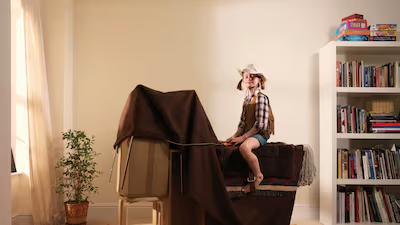
Encourage children to let their imagination run free when playing dress-up or rearranging furniture to create fun props. Getty Images
Encourage children to let their imagination run free when playing dress-up or rearranging furniture to create fun props. Getty Images
Spring break activities: Fun, creative and (mostly) free things to do at home with kids
Try The National's day-by-day guide to entertaining children over the extended school holidays
